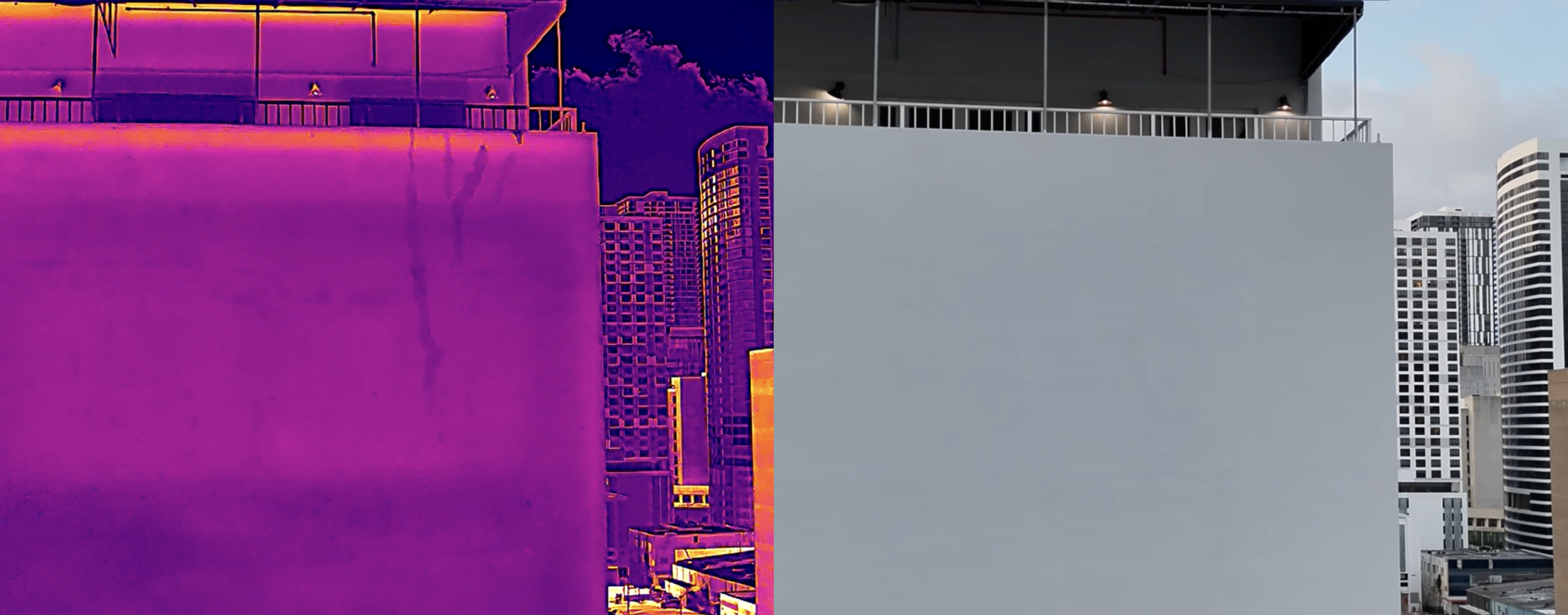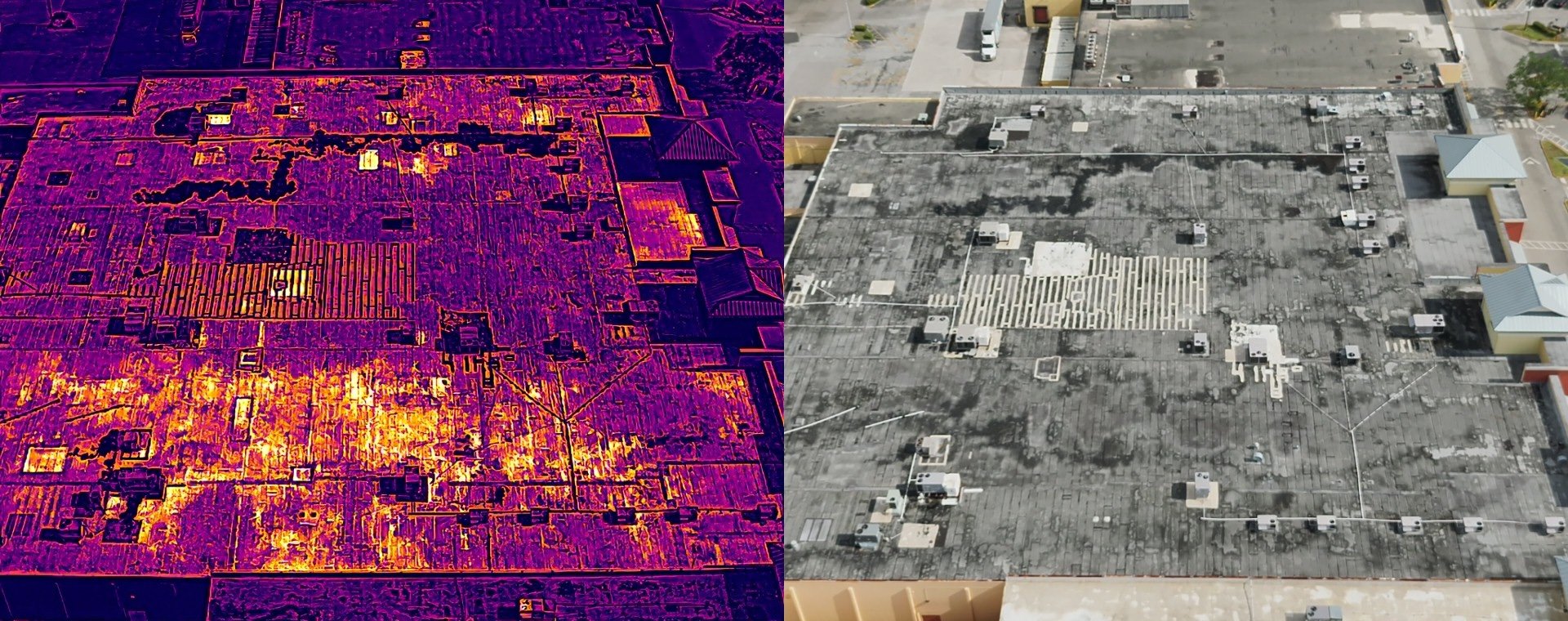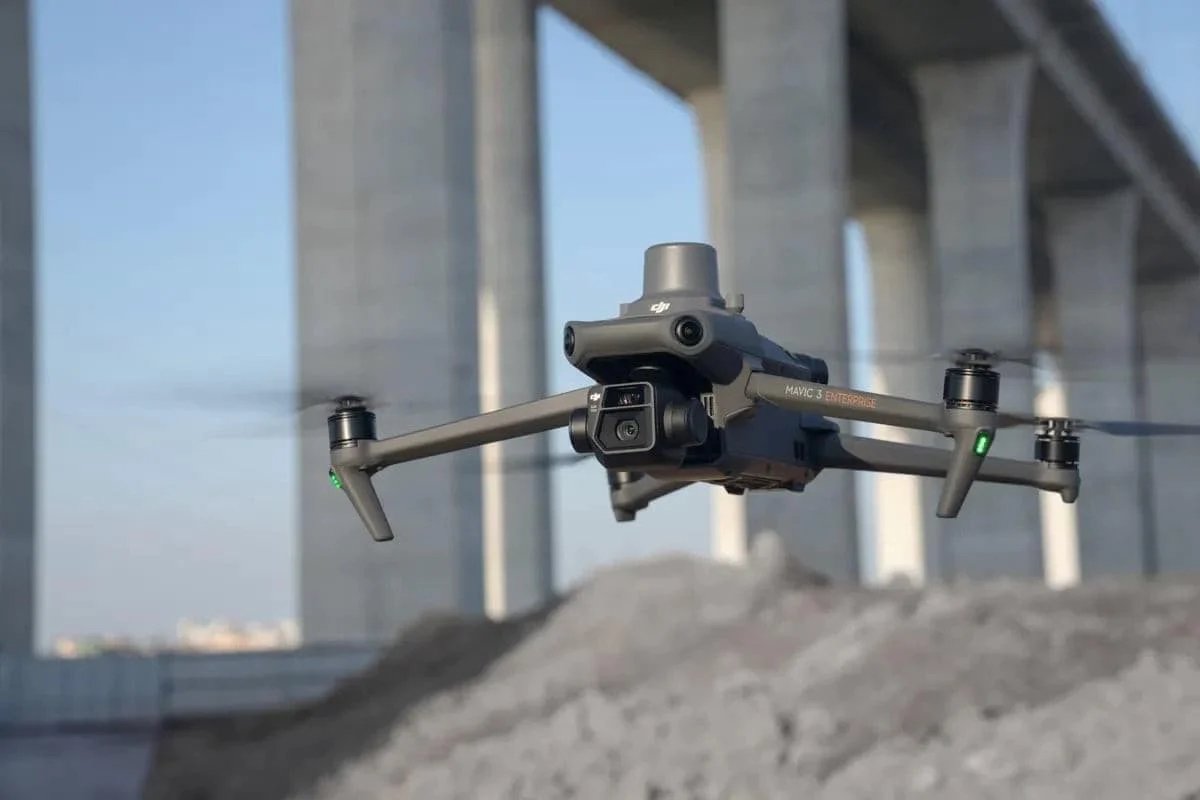See the Unseen: How Thermal Drone Inspections Are Revolutionizing Building Health in Florida
Published by: THE FUTURE 3D | Updated: May 2025
What You Can’t See Can Cost You Everything
In Florida’s climate, building deterioration doesn’t always announce itself with cracks or stains. The real danger is what hides beneath the surface—Moisture Infiltration, Roof Membrane Failure, Insulation Breakdown, and Structural Vulnerabilities that quietly worsen with every rainstorm or heat wave.
While traditional inspections rely on sight and touch, these methods miss what truly drives long-term damage. At THE FUTURE 3D, we offer Thermal Drone Inspections designed to uncover what’s invisible—before it becomes irreversible.
What Is a Thermal Drone Inspection?
A Thermal Drone Inspection deploys high-resolution drones equipped with Infrared Sensors to map temperature variations across a building’s surface. These Thermal Signatures expose differences in heat retention, allowing us to detect:
- Trapped Moisture beneath flat roofs or stucco facades
- Hidden Water Leaks behind walls, window perimeters, or parapets
- Damaged or Missing Insulation within the envelope
- HVAC Energy Loss or failed system distribution
- Hotspots in Electrical Panels or solar infrastructure
- Potential Mold Zones from long-term dampness
Each of these issues—often invisible to the naked eye—can escalate into major repairs if left unchecked.
Why This Matters More in Florida
Florida’s weather and architecture make it especially vulnerable:
- Subtropical Moisture: Constant humidity leads to water ingress in joints, roofs, and concrete.
- Flat Roofs and Concrete Exteriors: Retain water and heat, creating pockets of deterioration.
- High-Rise Construction: Physical inspections struggle to access upper floors and roof areas.
- Storm Exposure: Hurricanes and heavy rain stress your building’s envelope in ways that aren’t obvious—until it’s too late.
- Insurance Claim Conflicts: Without thermal proof, hidden damage may not be recognized—or reimbursed.
- Milestone Inspections & Recertification: With Florida’s updated laws requiring structural evaluations for aging buildings, Thermal Drone Inspections offer essential data for engineers conducting these reports—especially where moisture intrusion may compromise concrete, steel, or rebar integrity.
In one case, we partnered with DKK to perform a Roof Thermal Inspection that revealed trapped water beneath a membrane, avoiding an unnecessary full tear-off. Separately, our Facade Thermal Scan with CORE Structural Engineers pinpointed moisture intrusion behind stucco panels—enabling surgical repair planning rather than full-scale replacement. These services were part of a larger Florida Milestone Inspection package, providing data that fed directly into structural reports and long-term capital planning.
Supporting Facade Restoration Projects
Many of our clients use our Thermal + Visual Drone Imaging as the first step in a Facade Restoration Project. By identifying where heat and moisture behave abnormally, we’re able to isolate:
- Failed expansion joints or sealants
- Delaminating stucco or spalling concrete
- Rusting rebar or embedded metal
- Thermal bridging that signals insulation failure
These issues not only accelerate deterioration but also impact project scoping, cost estimation, and work sequencing. The result? A smarter restoration that targets the real problems—not just the visible ones.

When Should You Use Thermal Drone Inspections?
After Storm Events
Water trapped under membranes or behind facade coatings may take months to reveal itself—by then, it’s already caused damage. A post-storm thermal scan can identify problems before mold or structural compromise takes hold.
During Active Leak Investigations
Thermal imaging pinpoints the source of a leak—without ripping out ceilings or chasing water trails through drywall.
Before Major Capital Projects
If you’re about to recoat, repaint, or waterproof, a Thermal Drone Inspection ensures you’re not masking deeper problems underneath.
As Part of a Preventative Maintenance Program
Routine thermal inspections create a baseline thermal signature for your building, allowing you to track changes over time and act early—before damage is visible, and before costs multiply.
During Florida Milestone Inspections or Recertifications
When conducting structural assessments required under Florida’s Milestone Inspection laws, Thermal Drone Inspections can provide crucial insights into areas of concern—particularly where concrete degradation, water intrusion, or facade system failure may not yet be visible but already pose long-term risks.
What Sets Our Drone Service Apart
- Dual-Sensor Flights: We capture Thermal and Visual data simultaneously, minimizing disruption and maximizing data accuracy.
- FAA-Certified Teams: Every inspection is conducted by licensed drone operators and building envelope specialists.
- AI-Powered Defect Detection: Powered by AERIALLY.AI, our system auto-tags issues and flags priority zones for engineer review.
- Seamless Engineering Integration: Reports are formatted for PE certification, claims documentation, and construction planning.
- 100% Coverage at Height: Drones safely access facades and rooftops—areas often skipped by manual inspections due to danger or cost.
Why Act Now?
Because damage doesn’t wait. Florida’s climate ensures that small issues become big costs—quickly. By investing in Thermal Drone Inspections, you’re not just gathering data—you’re buying time, control, and budget certainty.
With THE FUTURE 3D and our new platform AERIALLY.AI™, you’re taking the smarter, safer, and faster route to building health.
📞 Schedule a Thermal Drone Scan
Ready to reveal what traditional inspections can’t?
Call us at: +1 (347) 998-1464
Or contact us directly: www.thefuture3d.com/contact
🔗 Learn more about our AI platform: AERIALLY.AI
🛠 In partnership with: DKK and CORE Structural Engineers
Ready to Start Your Project?
Get a free quote and consultation from our 3D scanning experts.
Get Your Free Quote


